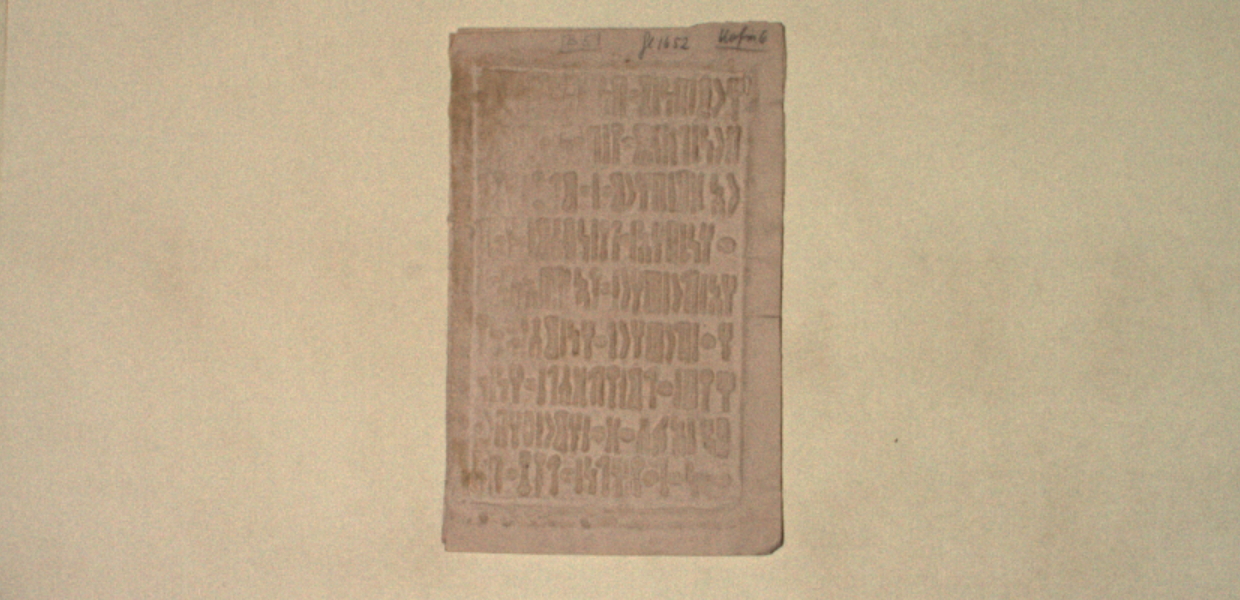Open access for fascinating South-Arabian ‘squeezes’ from the Glaser Collection
Copies of several hundred open access South-Arabian stone inscriptions have been made available in Europeana Collections via Kulturpool by the Austrian Academy of Sciences.
Guest blog by Petra Aigner, leader of a project titled 'Pilot-3D-Digitizing of Rare Ancient South Arabian Squeezes, 19th Century Glaser Collection'.
The collection of the Austrian scholar and explorer Eduard Glaser (1855-1908) was acquired for a large sum of money in 1910 by the Academy of Sciences in Vienna. The epigrapher and specialist in the South-Arabian languages collected a huge amount of medieval Arabic manuscripts and stone inscriptions that are now spread all over Europe. He also collected ‘squeezes’ (a kind of copy on paper) of the non-transportable ones, as well as photographs, glass-negatives, diaries, and notes of historical importance. The Academy owns the latter precious documents of the 1880s and 1890s and through two projects is digitally preserving and scientifically analysing them. This is another step towards the integration of the history and culture of South Arabia within the field of ancient Near Eastern studies and will help to give a fuller historical background of the early first millennium BCE till the rise of Islam.
Eduard Glaser collected these inscriptions during four expeditions (1882-1884, 1885-1886, 1887-1888, 1892-1894) to South Arabia - now largely the Republic of Yemen. Most of the squeezes are currently in a very poor state, while the original inscriptions are in many cases damaged and are (given Yemen’s political instability) inaccessible anyway. The preservation of this valuable epigraphic corpus will amount to the preservation of a significant part of ancient Yemen’s history and culture and, more broadly speaking, the preservation of an often overlooked part of the Semitic-speaking Near East.
The inscriptions are written in Ḥaḍramitic, Qatabānic, Minaic, and Sabaic languages of Ancient South Arabia. The time range is from 800 BCE-600 CE.
Almost 500 items from the Glaser Collection were transferred to Europeana Collections by the Austrian Academy of Sciences, Library, Archive & Collections (BAS:IS). The scans are available for use under an open licence.
George Hatke (Austrian Academy of Sciences, University of Vienna) is responsible for all transcriptions of the texts preserved in the squeezes, together with the translations and commentary. These remain intellectual property of the author. Please contact George.hatke@univie.ac.at

